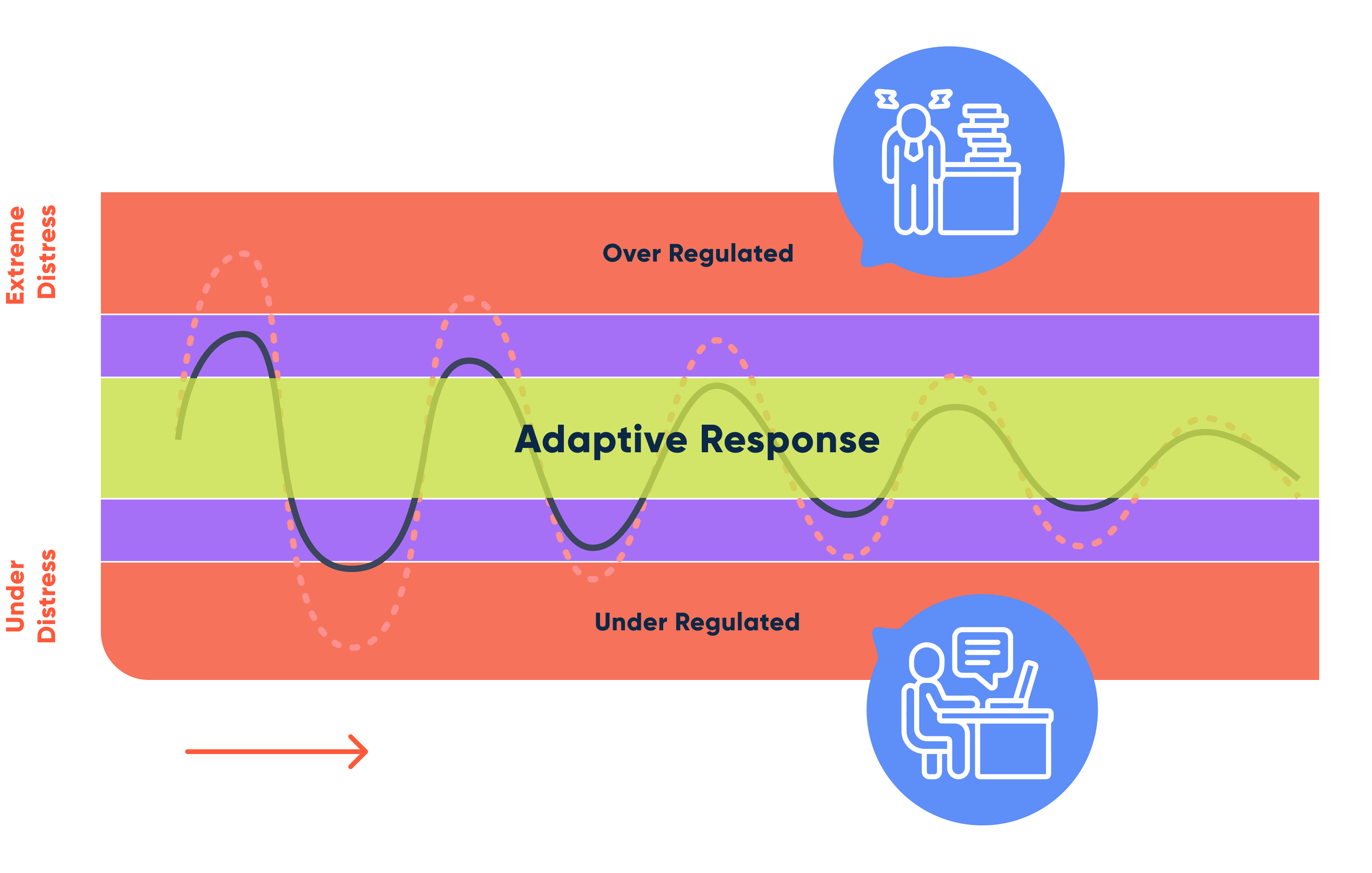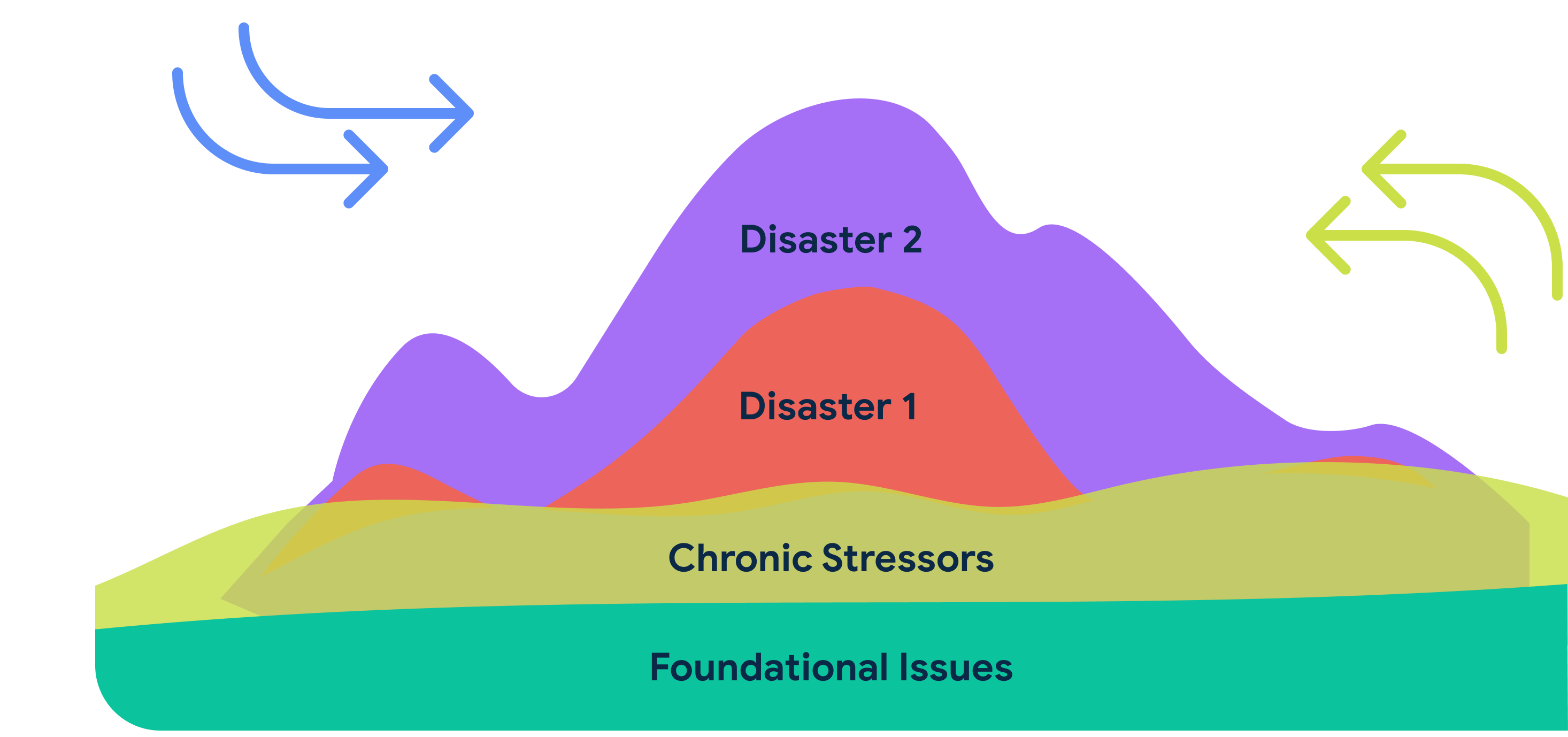This Model for Adaptive Response to Complex Cyclical Disasters (© 2022) was developed out of a three-way collaboration between Vibrant Emotional Health’s Crisis Emotional Care Team, the Group for the Advancement of Psychiatry’s Committee on Disasters, Trauma and Global Health, and Decision Point Systems.
Precipitated by the chronic, recurring disaster of the COVID19 pandemic, and superimposed natural disasters, forest fires and mass casualty events, we saw a pressing need to develop a framework for key stakeholders to make sense of and stage responses to the increasingly frequent and complex array of disaster events we face in contemporary society, superimposed atop chronic psychosocial and socioeconomic stressors.
Chronic, cyclical disasters push a community through exhausting, recurring phases of anticipation, impact, and adaptation before a final recovery phase can begin
Higher risk groups are likely to experience disaster differently than the general population. These groups are likely to be both disproportionately negatively impacted and experience inequity in aid and response. Higher risk groups include underrepresented communities such as racial minorities (such as Black, Indigenous communities, Asian, Pacific Islander, Latinx), religious minorities, ethnic minorities, people with disabilities, the LGBTQ+ community, people with low income, people residing in rural and remote areas, refugees/displaced communities, and others. Community leaders and responders must identify and assess these higher risk groups to ensure more equitable response.







The duration and intensity of each phase is highly dependent on the nature of the disaster
How Do We Reach Recovery?




Each “face,” group or culture experiencing a disaster is composed of various subgroups. Higher-risk communities may be more directly and severely impacted by the disaster and may also experience inequity in response efforts, especially in middle and low income countries.

Survivors represent members of the impacted community.
Community Leaders represents leadership and institutions of power and/or influence in the community. Examples include government officials, religious leaders, and other civic and social network leaders.
Responders represents the group of workers and community volunteers called upon in the face of a disaster or emergency to protect the lives, property, and overall safety of community members.
The phases of a chronic, cyclic disaster can cause varying level of stress and distress. In response, there is a range of adaptive (healthy) to maladaptive (unhealthy) responses that survivors, the community and responders may experience. Achieving healthy stress regulation in each phase requires different actions by each group. Examples that will help each group remain in the zone of healthy stress regulation are provided below.

If left unmitigated, survivors, the community, and responders will find themselves in the Purple and Red zones of extreme distress. More adaptive actions by individuals and leadership will keep these groups in the Zone of Healthy Stress Regulation






A country or community’s capacity to absorb the shock of a chronic disaster, such as a pandemic or war, depends on the foundational issues and stressors already present. It can be difficult to recover on its own when a community accumulates stressors that bring it to a tolerance limit.
Stakeholders can strengthen Protective Factors and address Imparing Factors to stay below the load threshold.

Communities may have ongoing disasters that can result in decreased resources. When survivors, responders and other community members work together, within each phase, these overlaid crises can be decreased to improve the community’s ability to problem solve and recover.
